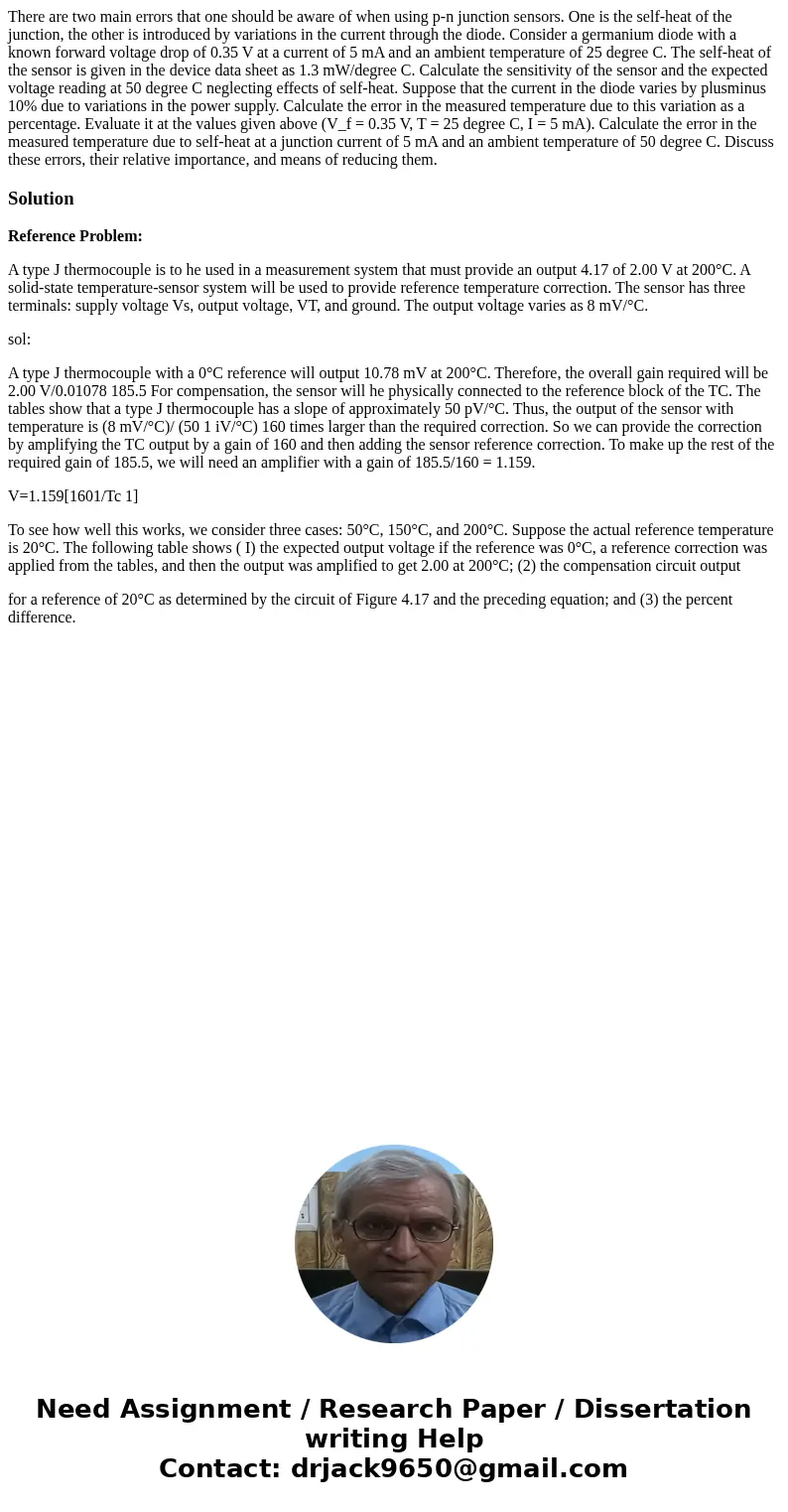There are two main errors that one should be aware of when u
Solution
Reference Problem:
A type J thermocouple is to he used in a measurement system that must provide an output 4.17 of 2.00 V at 200°C. A solid-state temperature-sensor system will be used to provide reference temperature correction. The sensor has three terminals: supply voltage Vs, output voltage, VT, and ground. The output voltage varies as 8 mV/°C.
sol:
A type J thermocouple with a 0°C reference will output 10.78 mV at 200°C. Therefore, the overall gain required will be 2.00 V/0.01078 185.5 For compensation, the sensor will he physically connected to the reference block of the TC. The tables show that a type J thermocouple has a slope of approximately 50 pV/°C. Thus, the output of the sensor with temperature is (8 mV/°C)/ (50 1 iV/°C) 160 times larger than the required correction. So we can provide the correction by amplifying the TC output by a gain of 160 and then adding the sensor reference correction. To make up the rest of the required gain of 185.5, we will need an amplifier with a gain of 185.5/160 = 1.159.
V=1.159[1601/Tc 1]
To see how well this works, we consider three cases: 50°C, 150°C, and 200°C. Suppose the actual reference temperature is 20°C. The following table shows ( I) the expected output voltage if the reference was 0°C, a reference correction was applied from the tables, and then the output was amplified to get 2.00 at 200°C; (2) the compensation circuit output
for a reference of 20°C as determined by the circuit of Figure 4.17 and the preceding equation; and (3) the percent difference.

 Homework Sourse
Homework Sourse